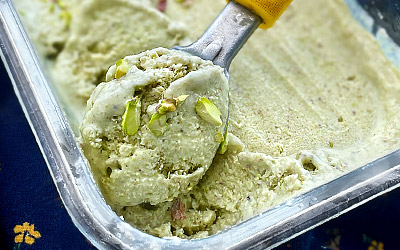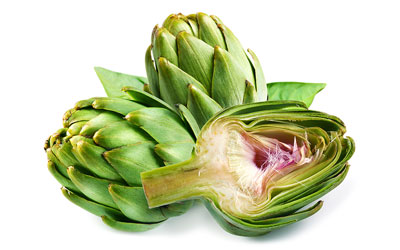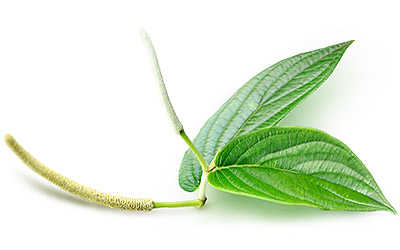Native to the Middle East and South Asia, almonds are not only popular, but also in very high demand. Almonds are ubiquitous throughout the world and offer various nutritional and medicinal benefits. Studies also have shown that almonds are excellent for satisfying hunger, making them a great healthy snack between meals.
Almond Medicinal Properties
- Medicinal action Cardioprotective, Osteoprotective
- Key constituents Polyphenols
- Ways to use Capsules, Juiced, Powder, Essential oil, Dried
- Medicinal rating (5) Great value
- Safety ranking Safe
Health Benefits of Almonds
The medicinal properties of almonds have several uses:
Protecting cardiovascular health. It has been shown that almonds help regulate cholesterol levels, as well as blood pressure, thus reducing the risk of heart disease.1
Strengthening bones and teeth. Almonds are rich in minerals, which support healthy bones and help prevent osteoporosis.
The neuroprotective properties of almonds (both sweet and bitter) are under investigation; some clinical trials have shown sweet almond syrup's effects on reducing ADHD symptoms and improving Alzheimer's disease as well as regular attention spam and memory.2 However, more research is needed to further explore these potential benefits.
Additionally, almonds help strengthen the immune system, protect the body against diseases, and regulate blood sugar, which is beneficial for people with diabetes. Moreover, eating almonds improves human microbiota as well as stimulates bowel movements, thus relieving constipation.3
Interestingly, a study has shown that using grape seed oil and sweet almond oil massage reduces pregnancy edema.4 Likewise, topical use of almond and sunflower seed oils can benefit preterm babies' skin.5
How It Works
The active constituents of almonds are globulins, mainly amandine
and albumin, a group of proteins that plays an important role in liver function, blood clotting, and fighting infection, as well as amino acids, such as arginine, histidine, lysine, phenylalanine, leucine, valine, tryptophan, methionine, and cystine, which are the building blocks of proteins and also regulate key metabolic pathways that are necessary for maintenance, growth, reproduction, and immunity.
A 30 - 40% decrease in heart disease has been observed in those who consume a healthy amount of almonds in their diet.
The skin of almonds is rich in phenolic compounds, including flavanol and flavonol glycosides, as well as anthocyanins, procyanidins, and phenolic acids, all of which possess a strong antioxidant capacity. Research shows these substances have anti-inflammatory properties, relieving gastrointestinal issues and protecting the body against harmful pathogens.
The insoluble fiber present in the skin of almonds is mainly responsible for helping regulate blood glucose levels, reducing cholesterol, and aiding constipation.
Herbs that support cardiovascular health are lucuma, olive, garlic, and tomato; whereas prunes, soy, and spinach also contribute to strengthen bones and teeth.
Almonds Side Effects
Sweet almonds have not reported side effects and are considered generally safe for human consumption, but unprocessed bitter almonds or unknown varieties of almonds should be avoided, as they contain a chemical called hydrocyanic acid (HCN), or cyanide, which is extremely poisonous. However, bitter almond oil is safe, as the process of extraction eliminates the toxic cyanide, and the final product can be used for flavoring and medicinal purposes.
Almond Nutrition
Almond's nutritional profile is also remarkable: it is an excellent source of minerals, mainly copper, manganese, and magnesium, as well as vitamins E and B2 (riboflavin).The combined action of these compounds have a positive impact on the durability and strength of bones and teeth, as well as on the immune system.
Almonds are also a good source of phosphorus, zinc, calcium, and iron, as well as B-complex vitamins, mainly B3 (niacin) and B1(thiamin). Additionally, almonds provide reasonable amounts of other minerals and vitamins, all of which contribute to their nutritional benefits.
Almonds are low in calories compared with other nuts, but rich in healthy fatty acids, insoluble fiber, and protein. Their daily consumption contributes to increase satiety and reduce food cravings, thus helping weight management.
23 unroasted, whole kernel almonds (one ounce or 28.35 g) amount 164 calories, with 12% and 14% of the daily value for protein and dietary fiber, respectively.

How to Consume Almond
- Edible parts Seed, Oil
- Edible uses Flavoring, Beverage, Oil, Protein, Dairy substitute
- Taste Sweet
How to Consume Almond
Almonds are a fantastic supply of protein and can be consumed a variety of ways. Sweet almonds can be eaten whole or raw, in their natural form, while bitter almonds are pressed for oil. They can be purchased in raw form, salted, or coated in tasty seasonings.
Natural Forms
Raw. A bag of almonds is a handy snack to keep in a desk drawer or a purse, as they are known to stave off hunger in moments of need.
Roasted. Roasted and crushed almonds are used in snacks and also in countless recipes, including the famous Linzer Torte.
Vegetable milk. Easy to prepare at home and also available in most supermarkets, almond milk is a good source of calcium and protein, as well as an alternative version of cow's milk for vegans and those who have lactose sensitivity.
Vegetable butter. Less caloric than peanut butter, almond butter is the most nutrient-rich nut out there, and also a great source of fiber. Almond butter is protein-packed and can be a delicious midday snack.
Flour. This flour is produced by grinding peeled almonds into a fine powder, famously used to prepare macaroons, and it is also added to many other sweet recipes. Being gluten free, it is an ideal substitute of wheat flour for celiacs, as well as for those with gluten sensitivity.
Oil. Nutty-flavored, sweet almond oil has both nutritional and cosmetic uses. It can be consumed with salads, used for stir-fried dishes, or be taken in medicinal doses of 2 - 4 tablespoons per day to make the most of its omega-3 content. It also possess demulcent properties and it is often used for treating dry, sensitive skin, as well as a natural makeup remover.
Obtained from a different variety of almonds, bitter almond oil has sedative properties and it is used as a cough remedy.
Herbal Remedies & Supplements
Capsules. Sweet almond oil is also popular as a dietary supplement, due to its impressive nutritional content of omega-3 fatty acids.
Growing
- Life cycle Perennial
- Harvested parts Seeds
- Light requirements Full sun
- Soil Medium (loam), Well-drained
- Growing habitat Temperate climates
- Plant spacing average 7 m (22.97 ft)
- Growing time 5 years
- Propagation techniques Grafting
Almond trees are a hardy species, typically grown in expansive orchards. When in bloom, almond trees are a beautiful sight, with light, white to pink flowers adorning their dark brown limbs.
Growing Guidelines
Almonds prefer nutrient rich, deep soils with a good drainage.
The planting location must be in a warm area, with plenty of sunlight, since almond trees are sensitive to cold.
Almonds are commonly propagated using peach seedlings as rootstocks.
Almond trees grow quite large, and at maturity will occupy a space of roughly 20 x 20 feet (6 x 6 m). They are usually planted in rows 22 - 24 feet (6.5 - 6.9 m) wide, with the same spacing between the plants.
Almonds are known for their relatively high drought tolerance, however, a good irrigation system will have a very big impact on yields.
The trees can be grown by simply placing a fresh, unprocessed nut in a sunny location, and they only need maintenance pruning every few years.
Almonds can take up to five years to harvest, which is done by shaking the trees when hulls begin to split. For the amateur home-grower, it's important to pick up the almonds as soon as they're ready so that they don't become a passing bird's lunch.
- This trees are very susceptible to bacterial canker disease.
Detailed information about growing almonds can be found in the herb garden section.
Additional Information
- Other uses Alcohol, Cosmetics, Perfume
Plant Biology
Almond trees are most commonly found in California and southern Europe along the Mediterranean coastline. They are generally 10 - 20 feet (3 - 6 m) high with thorny dark brown branches, lanceolate leaves, and soft, white flowers. The fruit of the almond, otherwise known as the drupe, is left either shelled or unshelled.
Classification
Almond (Prunus dulcis) is one of the 3000 species that, across 100 genera, make part of the large Rosaceae family. Only the Prunus genus comprises over 400 species of both deciduous and evergreen plants, notably the so called "stone fruits", such as cherry (Prunus spp.), hawthorn (Crataegus monogyna),
prunes (Prunus domestica), and apricot (Prunus armeniaca). All parts of Prunus plants are toxic except the mature fruits.
Varieties and Cultivars of Almond
P. dulcis (alternatively known as P. amygdalus or Amygdalus dulcis) has two main varieties: P. dulcis var. dulcis (sweet almond) and P. dulcis var. amara (bitter almond).
Sweet almonds have many cultivars, being some of the most popular ones: 'Nonpareil', 'Carmel', 'Butte', 'Tuono', 'Padre', 'Mission', 'Monterey', 'Sonora', 'Fritz', 'Price', 'Marcona', 'Ferragnes', and 'Peerless'. The hybrid of 'Tuono' and 'Nonpareil' produces self-pollinating trees.
Sweet almonds are generally more beneficial for oral consumption, as bitter almonds are high in cyanide.
Historical Information
Native to tempered regions of Asia and the Mediterranean - a large territory that includes present-day Turkmenistan, Uzbekistan, Israel, Jordan, Lebanon, and Turkey - almond's history can be traced back to the trade routes of the first civilizations.
It is thought that modern almonds evolved from ancestral species in the Middle East, and were domesticated around 3000 BCE. The almond tree and its nuts have been recorded in Hebrew literature as early as 2000 BCE, and modern cultivars were brought into Greece around 300 BCE. From there, they spread to other areas of the Mediterranean basin and were introduced to North America during the 19th century.
Economic Data
The first European almonds were planted in California as early as 1853, and nowadays “The Golden State" is the largest commercial grower of these nuts, accounting for about 84% of the global production.
An agricultural super-crop in California, almonds contribute $4.3 billion USD per year and create jobs for 104,000 people. As the demand grows, over 900,000 acres (364,217 ha) in California are designated for almond farming.
Popular Beliefs
The historical importance of the almond tree is reflected in many cultural expressions, specially in the Asian countries from where this valuable crop hailed. While in areas of Pakistan, western China, and India, the prayer cap, or topi, is often adorned with patterns that represent single almond blossoms, in Arabia and other Muslim areas the early almond blossoms are seen as a symbol of hope, and in the Hebrew tradition a flowering almond represents God's watchfulness over the creation. To this day, modern English Jews carry branches of flowering almonds into the synagogue on spring festival days.
In Tuscany, almond branches are used as divining rods to locate hidden treasures.
Other Uses of Almond
Cosmetics. The sweet almond oil is used as a fragrance in perfumery, as well as an emollient agent in creams and lotions.
Liquors. Almonds are also used as a flavoring ingredient in Amaretto, a traditional Italian liquor.
Industrial uses. The gum exuded from the almond tree has been employed as a substitute for tragacanth.
Sources
- Almonds: Botany, Production and Uses, p. 45
- Breeding Plantation Tree Crops: Temperate Species, pp. 2-4
- Critical Reviews in Food Science and Nutrition, Effects of almond consumption on the reduction of LDL-cholesterol: a discussion of potential mechanisms and future research directions
- Edible Medicinal And Non-Medicinal Plants, Volume 4, Fruits
- Journal of Bioprocessing and Biotechniques, Potential Health Benefits of Almond Skin
- Journal of Clinical and Diagnostic Research, Therapeutic Applications of Almonds (Prunus amygdalus L): A Review, 2012
- Journal of Research in Medical Sciences, The effect of almonds on anthropometric measurements and lipid profile in overweight and obese females in a weight reduction program: A randomized controlled clinical trial, 2014
- Purdue University, Handbook of Energy Crops, Prunus dulcis (Mill.) D.A. Webb
- University of California, Davis, Almond Production in California
- Utah State University, Yard and Garden, Almonds
- USDA Plants Database, ARS Scientists Develop Self-pollinating Almond Trees
- USDA Nutrient Database, United States Department of Agriculture
- Germplasm Resources Information, Taxon: Prunus dulcis
Footnotes:
- Complementary Therapies in Medicine. (2019). Almond oil for patients with hyperlipidemia: A randomized open-label controlled clinical trial. Retrieved May 11, 2021 from https://www.sciencedirect.com/science/article/abs/pii/S0965229918304205
- Complementary Therapies in Clinical Practice. (2019). Effect of sweet almond syrup versus methylphenidate in children with ADHD: A randomized, triple-blind clinical trial. Retrieved May 11, 2021 from https://www.sciencedirect.com/science/article/abs/pii/S1744388118303736
- Nutrition Research. (2021). Almond consumption affects fecal microbiota composition, stool pH and stool moisture in overweight and obese adults with elevates fasting blood glucose: a randomized controlled trial. Retrieved May 11, 2021 from https://www.sciencedirect.com/science/article/abs/pii/S0271531720305704
- Evidence-Based Complementary and Alternative Medicine. (2020). Comparing the Effect of Foot Massage with Grape Seed Oil and Sweet Almond Oil on Physiological Leg Edema in Primigravidae: A Randomized Clinical Trial. Retrieved May 11, 2021 from https://www.hindawi.com/journals/ecam/2020/6835814/
- Advances in Skin & Wound Care. (2020). The Effect of Sunflower Seed and Almond Oil on Preterm Infant Skin: A Randomized Controlled Trial. Retrieved May 11, 2021 from https://journals.lww.com/aswcjournal/Fulltext/2020/08000/The_Effect_of_Sunflower_Seed_and_Almond_Oil_on.10.aspx?context=LatestArticles
















